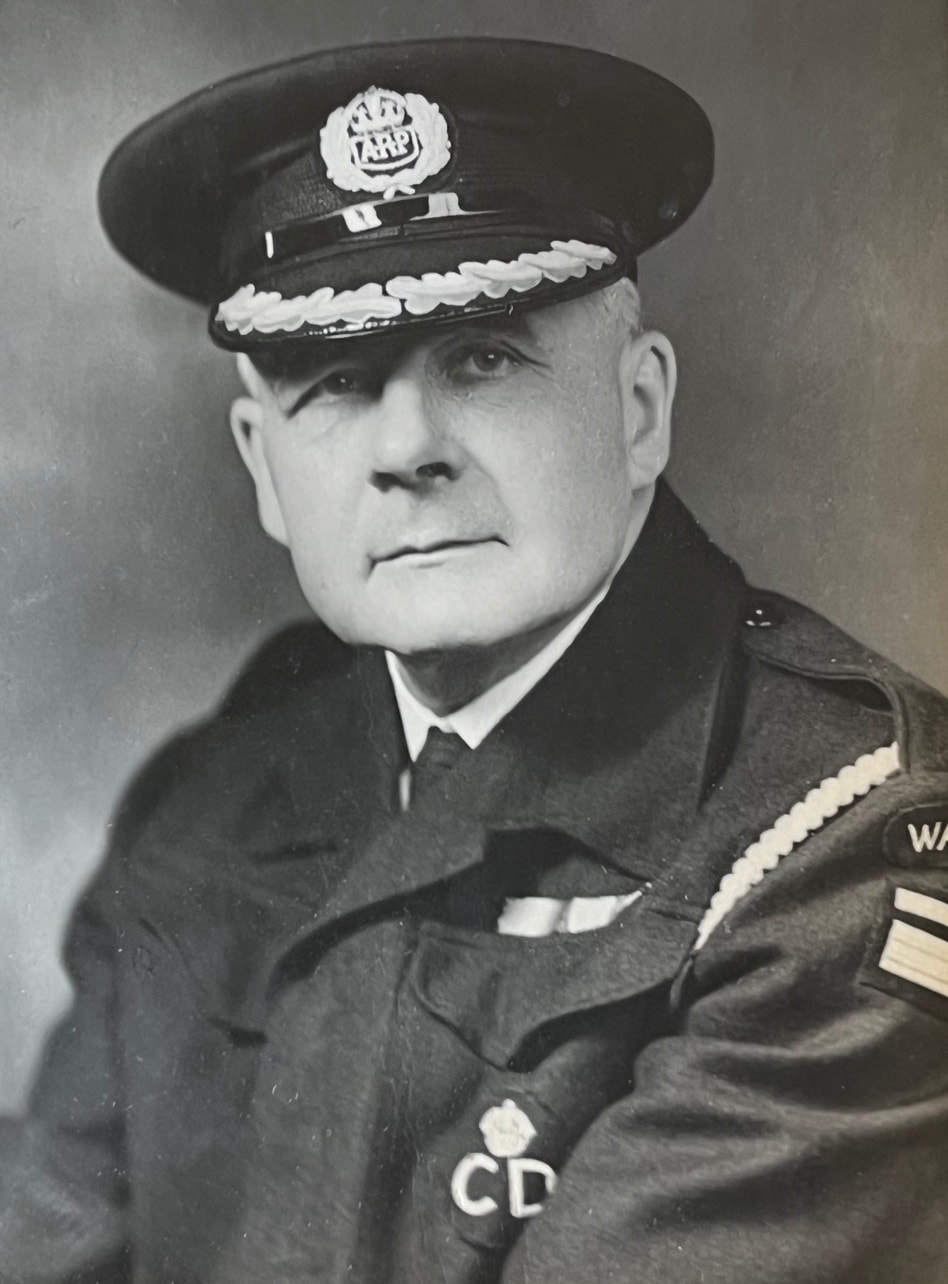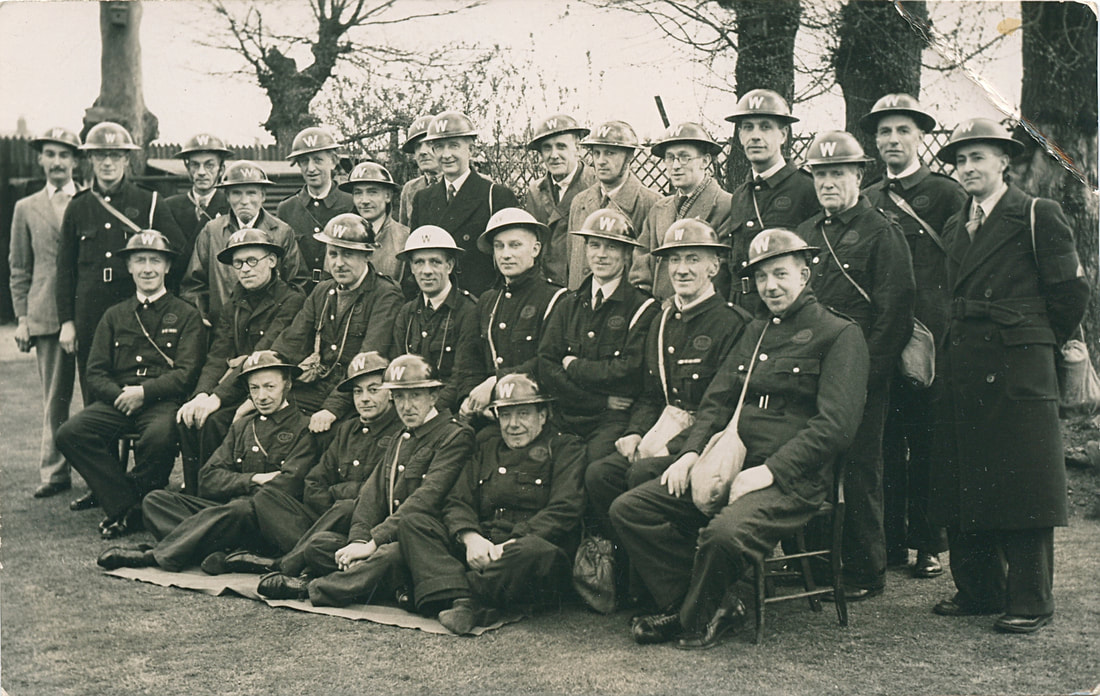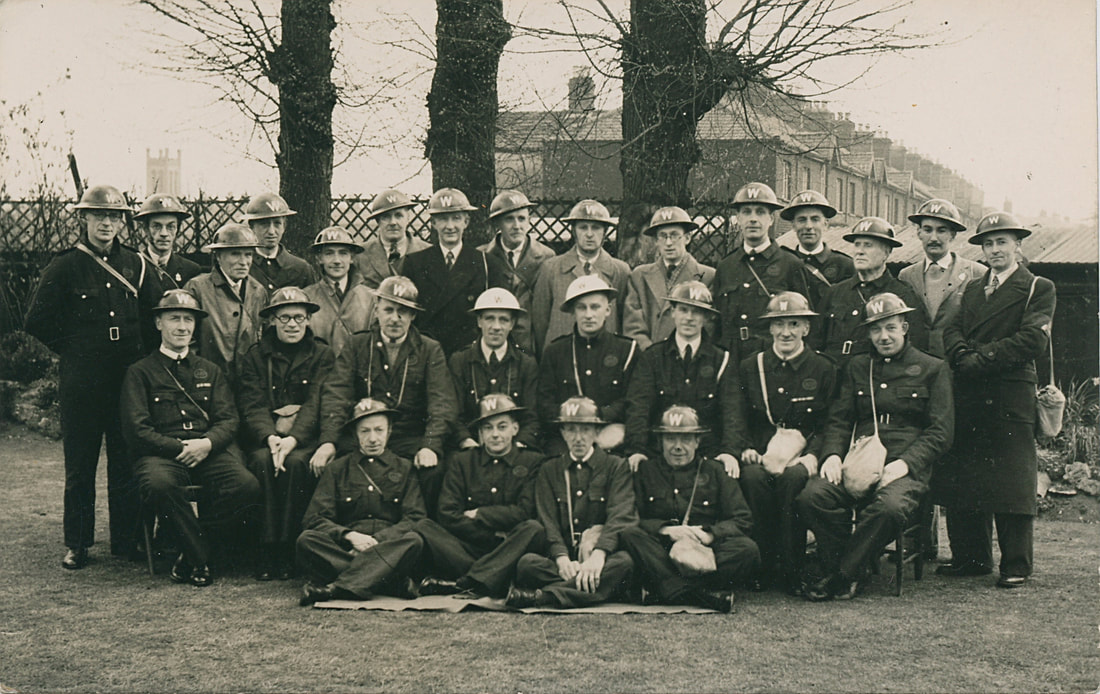|
There is a limited amount of background detail for this photo but interesting to see bluettes and battledress in the same photo plus the ARP nursing uniforms. The ARP breast badge on the bluettes appears to be quite high above the pocket.
0 Comments
A group portrait of a Rescue & Demolition Party probably taken early in the war (or even pre-war) going by the complete lack of uniforms on show (they have respirator carriers, helmets, armbands and ARP badges visible). On the right wearing the armband is the Leader of the Rescue Party. Helmets feature the letters "R & D". Location unknown.
Rescue Parties like this were usually manned by 10 volunteers drawn from various trades such as carpenters and builders or council workmen. They had responsibility for extricating people (or bodies) from bombed buildings, rendering first aid and also shoring up or demolishing bomb-damaged buildings. The role of the Rescue Parties evolved through the war with Light and Heavy Rescue Parties developing: Image courtesy of Jon Mills. A female volunteer stands in front of a Mobile Unit, the fender has a triangle with "FAP" for First Aid Post. The vehicle would have contained all the supplies for setting up a temporary First Aid Post at an incident. Above the MU on the side of the vehicle, there looks to be S.R.D.C. (the D.C. is probably District Council). The name "Porter, Putt & Fletcher" on the sign relates to a business in the Gravesend area (north Kent). My knowledge of wartime vehicles is poor but if you know the name of the vehicle post a comment.
Image courtesy of Jonathan O'Keeffe. A photograph that it is believed shows the Chief Warden of Croydon, Alderman Anson Boddington J.P. He would later become the mayor of Croydon in 1943. His peaked cap and especially the ARP badge are quite rare to see.
Image courtesy of Roger Miles at Home Front Collection. A couple of photographs showing wardens from the Trafford Road area in Norwich. We can get a rough date from the uniforms and armbands shown. I would say the photo was taken after July 1940 (there's a chap wearing the rainbow armband far right) but pre-summer 1941 (no evidence of battledress being worn just bluette overalls).
Photos courtesy of Jonathan Emery. Jonathan's maternal grandfather, Sidney Weston (shoe and boot maker/repairer) is sat second right on the floor; sadly, he passed away in April 1942, aged 48. |
Please support this website's running costs and keep it advert free
Categories
All
Archives
June 2024
|
|
|
Copyright © 2018–2024
|






 RSS Feed
RSS Feed